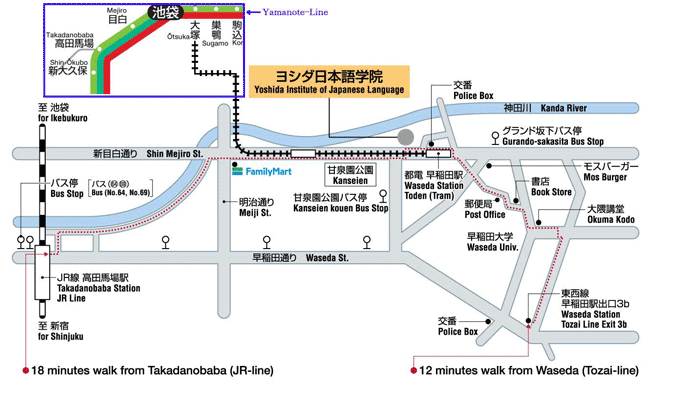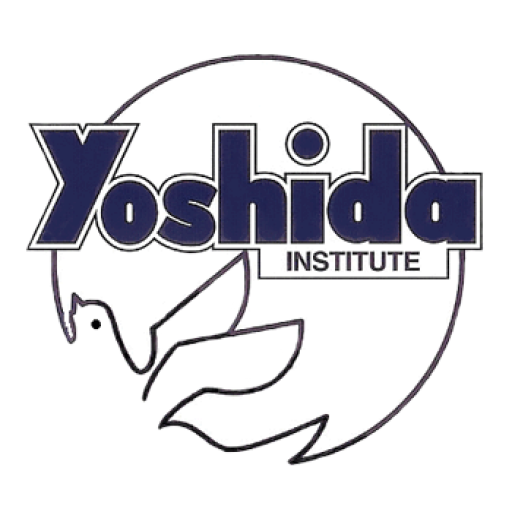
Search Results for: insurance
- 13
12月 18
-
- 11
12月 18
-
INSURANCE
The National Health Insurance
Students generally enroll in the National Health Insurance system once they arrive in Japan. Under this system, you must pay monthly premiums. You will be issued an insurance card, which allows you to receive medical treatment at only 30% of the cost by showing the card at a medical facility. You enroll at the civic center of the ward where you reside in Tokyo. The cost varies depending upon the ward where you live but the cost for one year is usually around ¥15,000. On top of this, the insurance students with student visas obtain from Yoshida covers the 30% not paid for by National Health Insurance in the case of sickness or accidents, so a student who crashes their bicycle is 100% covered in cases of injury! (Wounded pride is not covered.)
more detailed: The National Health Insurance(PDF-2771 kb)
Procedures for Withdrawal
Please be sure to return your National Health Insurance card.
- If you have moved out of City/word.
- If you plan to leave Japan (return to your home country).
Student Insurance
The insurance fee covers basic liability insurance for all students while they attend classes at Yoshida. In addition, students with student visas are covered at school and outside of school for both accidents and general sickness. The insurance is good for as long as the student studies at Yoshida, whether for six months or two years, with no annual renewal fee.
more detailed: Student Insurance(PDF-853 kb)
| Insurance Coverage (Student Visa students only) | |||||
| Ⅰ Indemnity for loss of life and permanent disability | ¥2,000,000 | ||||
| Ⅱ Liability compensation | ¥30,000,000 | ||||
| Ⅲ Indemnity for medical treatment expenses | ¥100,000 | ||||
| Ⅳ Relief person expense | ¥1,000,000 | ||||
If you join student insurance and national health insurance, students can safely live in Japan with these insurance. And those premiums are kept inexpensive for the students.
Therefore, you will not need to enroll in your country’s travel insurance.
In addition, student visa holders are obliged to join these insurance by the Immigration Bureau of Japan.
- 08
2月 19
-
METHOD OF OPENING ACCOUNT
To open an account with a bank
If you have your own account at bank, you utility expenses and telephone bills could be drawn automatically from your bank account. At the same time, money such as part-time job salary, could also be paid into your account automatically and living expenses and school expenses could be received easily from your parents if you have an account. To open an account, you must have been residing in Japan for at least six months. ( the Foreign Exchange and Foreign Trade Act)
However, only Japan Post Bank (ゆうちょ銀行) can open an account. But it can not be used for overseas remittance for six months after opening an account.
Necessary documents for opening an account
- You must be a resident of Japan with a contact phone number to confirm the details of your account application form. “Period of Stay” on the Residence card is at least 1 year.
- Residence Card (Check if the address on the card is your current address.)
- you should write your name in katakana.
- Please select your Pin Numbers with 4 digits.(before going to bank.)
- Cash card will be sent to you later by post.
- Seal (HANKO) is required to open a bank account with Japan Postal bank, banks.
You can make stamps (HANKO) at Don Quijote (ドン・キホーテ)/ Takadanobaba Ekimae. A seal on which your name in hiragana, katakana or Kanji has been engraved is OK. Even if you do not understand Japanese at all, it will explain in English. (Cost: From 500 yen)


Smart Phone(Mobile phome)
There are several mobile company in Tokyo. To buy a smart phone and begin a new smart phone service subscription, you must have a bank account in Japan. In general, you are required to present your bankbook, residence card, passport, and a statement of parental approval (for those below age 20). For details, consult the websites of the respective service providers.
- au (KDD) : au(KDD)
- Soft Bank : Softbank / Shops with English-speaking staff
- DOCOMO : docome / by phone( in English, Portuguese, Chinese, and Spanish)
SIM Card(Subscriber Identity Module Card)
- 11
12月 18
-
LONG TERM FEES
As much as possible we try to keep our tuition and fees low so that students can afford to study longer and thus get more out of their studies. Students can either pay through Flywire or by bank wire transfer. The fees for full-time courses are slightly different depending upon whether you’re going to be studying on a student visa or not. The student visa process is complicated and somewhat time-consuming, so there’s an application fee. Please note that the costs are slightly different if you are only studying for a single term with a tourist visa. Value for money: The Institute aims to provide high quality and yet reasonably priced professional education and training. Our courses are excellent value for money. (Click Red number to see the Japanese yen to dollar exchange rate.)
| Full-time Course Fees (Student Visa) | |
| Ⅰ Application | ¥25,000 |
| Ⅱ Admission (Registration) | ¥65,000 |
| Ⅲ Tuition(4 terms – 1 year) | ¥660,000 |
| Ⅳ Educational operating | ¥57,000 |
| Total | ¥807,000 |
- Please remit Application fee to our bank account by the last day of the application period.
- Application fee is not refundable for any reason.
- All prices quoted include the taxes.
- Education operating fee includes extracurricular activities, student insurance, facilities and the main textbooks. JLPT,EJU(textbooks) are not included in the amounts written above).
- Yoshida Institute Refund Policy. – Please be sure to read –
If you also wish to continue studying after 1 year
| In the case of six months(two terms) | |
| Ⅰ Tuition (two terms – 6 months) | ¥330,000 |
| Ⅱ Educational operating | ¥12,000 |
| Total (six months) | ¥342,000 |
- All prices quoted include the taxes.
- Education operating fee includes extracurricular activities, facilities and the main textbooks. JLPT,EJU(textbooks) are not included in the amounts written above.
- Yoshida Institute Refund Policy.- Please be sure to read –
Payment-methods
As much as possible we try to keep our tuition and fees low so that students can afford to study longer and thus get more out of their studies. Students can select the payment-methods.
- 11
12月 18
-
HOUSING OPTIONS
Housing
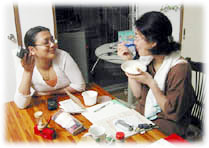 While Tokyo has a reputation as being an expensive place to live, there are actually quite a large number of possibilities open for foreigners coming to study in Japan. A large percentage of Japanese university students study in the Tokyo area so there’s a wide Shrutee and Tomo variety of student housing available, from dormitories to private apartments. While Yoshida does not provide any sort of housing for students, we can definitely help you with your housing search.
While Tokyo has a reputation as being an expensive place to live, there are actually quite a large number of possibilities open for foreigners coming to study in Japan. A large percentage of Japanese university students study in the Tokyo area so there’s a wide Shrutee and Tomo variety of student housing available, from dormitories to private apartments. While Yoshida does not provide any sort of housing for students, we can definitely help you with your housing search.
When you arrive in Japan, there are a number of hotels and inns that are a short commute away from the school, especially near big train stations such as Ikebukuro, Shinjuku and Ueno. Several are listed on our housing options page.
For short stays in Japan, a guest house is often the easiest option. Students live together with other foreigners and Japanese. The monthly rent includes the use of a furnished room, internet connection(WiFi), a shared kitchen and often all utilities also. Some are quite large with up to fifty people living in one building but others are small with only five or six people living together. When you arrive you can investigate the possibilities and see what works best for you.
Procedure at municipal office
After finding housing, students who come to Japan on a student visa will need to register at the local civic center within 14 days after arrival in Japan. You will need to bring your residence card. Once you’ve received a residence card (zairyuu-card), which can be used as a means of identification in lieu of your passport. : Application form(PDF-30.2kb)
Moving-Out, Moving-In:
When you move out to another city or ward, you must submit a moving-out notice and receive a moving-out certificate before you proceed with moving in to your new address in another city or ward. A moving out certificate will be issued free of charge. After moving in, the certificate must be submitted to the new municipal office to complete the moving-in notification. Soon after you moved, please tell us your new address.
Guest Houses and Dormitories
Guest houses and dormitories provide affordable short-term or long-term accommodation for many students. Guest houses provide rooms in small houses, from three rooms and up, with shared kitchen and bath facilities. Rooms in dormitories are typically the cheapest but afford very little privacy.
- OAKHOUSE – guest house and apartment rental agency. Earn Oakhouse PAO points you can use when moving in! Register as an Oak Member now and get 10,000 PAO points (1 PAO=1 yen)!
- Soleil Waseda – It’s a five minutes’ walk from our school.Clean, Safe & Convenient(Ladies only)
- Sakura House – guest house and apartment rental agency.
- Borderless House – Let’s room share with Japanese! – Location: More than 60 places inside Tokyo area.
- Fujimi House – Monthly furnished Guest house(with private bed room) in centrally located in Tokyo.
There are also listings for guest houses and rooms in apartments shared with other foreigners in two free weekly magazines, Tokyo Notice Board.
Apartments
Students planning to live in Japan for a long time can rent an apartment on their own but the process is somewhat complicated. A typical strategy for finding an apartment is to first explore various places that are a convenient commute away from school and visit real estate agents in the area. Information on apartments is only provided in Japanese so it’s best for beginning students to wait a while before trying to rent an apartment on their own.
The following three companies will be able to handle phone calls in English(or Multilingual).
- Fontana – Short term rental real estate company with no key money or guarantor required! All apartments are fully furnished. Move-in today with only first month’s rent and 1 month refundable security deposit.
- Kimi Information Center – apartment listing service.
- Fujimi House – Monthly furnished private rooms in Tokyo.
A rental system in Japan
Students are expected to make their own arrangements. There is usually a kitchen, toilet and bath in every apartment. Many apartments in Japan are unfurnished, and students will need to provide themselves with daily necessities.
* The size of the private apartment is 9㎡ – 12㎡.
Cost
Rent is normally paid on a monthly basis. The following shows the average monthly rent in Tokyo City. Click red number : Convert yen into dollars.
- room rent : ¥55,000 – ¥100,000
- Common service fees : ¥3,000 – ¥5,000
- Common service fees are fees for facilities shared by tenants.
SHIKIKIN / REIKIN
When the contract to rent a room is signed, the tenant must pay a lump sum of money known as SHIKIKIN and REIKIN to the landlord.
SHIKIKIN (key-money and/or deposit): a sum of money to be paid to the landlord as security money for possible damages. SHIKIKIN will be refunded upon vacating the room after a check has been made for any delinquency of rent and/or damage to the property.
REIKIN (remuneration): a non-refundable fee to be paid to the landlord when the contract is signed.
The amount of the commission to the real estate company is equal to one month’s rent or half month’s rent.
* SHIKIKIN and REIKIN combined amounts to around 2 to 4 times the monthly rent.
Utilities, such as electricity, gas and water, are typically not included. Electricity is usually the most expensive of the three followed by gas and water. The average cost for utilities for one person is just under 10,000 yen a month: about 4,000 yen for electricity, 3,000 yen for gas and 2,000 yen for water.
Internet connection services.(WiFi)
- NTT East (English) : NTT East Official Site for Internet Connection Services
- au Hikari (English) : au Hikari Official Site for Home Internet Connection
- Softbank (English) : Softbank Hikari Official site for Home Internet Connection
Housing Guarantor System
Generally, when you sign an apartment rental contract in Japan, a co-signer is required. When a co-signer is not available, you must use the services of a guarantor company. The guarantee company is introduced by a real estate company.
- You do not have to find anyone to co-sign for your housing. You can enjoy the company’s co-sign guarantee simply by designating both an emergency contact person in your home country (family), and an emergency contact here in Japan (Yoshida staff).
- Guarantor fees:First time service fee: 25,000 yen to 45,000 yen.
Hotels and Inns
The Yoshida Institute is located in the western part of Tokyo, near Shinjuku and Ikebukuro. When you first arrive you’ll most likely need to spend a short amount of time in a hotel or inn until you get settled. There are a large number of hotels nearby and the ones below are some of the more affordable choices. Booking in advance is recommended but you can always reserve a room at the Welcome Inns Reservation Desk at Narita Airport when you arrive.
- Kimi Ryokan – a modern Japanese-style inn popular with foreigners
- Taito Ryokan – very inexpensive inn near Asakusa
- New Koyo Hotel – backpacker’s hotel with a mixture of Western-style and Japanese-style rooms.
- Tama Ryokan – small Japanese-style inn in Takadanobaba, a 20 minute walk to school.
- House Ikebukuro – modern Japanese-style inn in Ikebukuro
The Welcome Inns network also runs an online reservation service where you can look up hotels and make reservations.
- 11
12月 18
-
HEAD TO JAPAN
The new residency management system
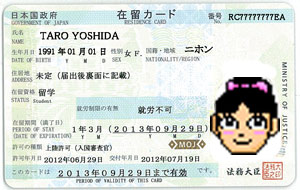 Upon arrival you’ll receive one year student visa (or one year three months) which can be extended another one year during your stay in Japan.
Upon arrival you’ll receive one year student visa (or one year three months) which can be extended another one year during your stay in Japan.
Immigration examination : At Narita and Haneda Airports, besides having a seal of landing verification stamped in your passports, mid- to long-term residents will be issued a residence card (zairyuu-card).
With the new residency management system, permission to engage in an activity other than that permitted under the resident status (Part-time working permit) may be given at airports. The application form will be sent to you along with your COE.
After receiving the residence card, you must visit the City/Ward Office of your residence within 14 days to register your address in Japan.
And International students who reside in Japan must become a member of the National Health Insurance.
Although our school can provide explanations of the National Health Insurance plan, students are responsible for completing the actual enrollment procedure at their City/Ward office by themselves.
Students in possession of a valid passport and residence card who will be re-entering Japan within two months of their departure to continue their activities in Japan will, in principle, not be required to apply for a re-entry permit.
The immigration office will not justify your absence for two months or more. (if you are students) Be sure to contact us if you are going to absent from the class. In the worst case we will have to dismiss you.
In case you return to your country, it is possible to bring your residence card as a souvenir.
If you get confirmation of embarkation without re-entry permit (including special re-entry permit) at a port of departure, you are required to return the residence card, but it will be return to the person after a hole is made in the returned residence card for invalidation.
Special Re-entry System
In July 2012, the Ministry of Justice put in place a new “residency management system,” under which foreign nationals who possess a valid passport and resident card may leave Japan and return within one year without, as a rule, needing to apply for a re-entry permission. This is called the “Special Re-entry System.”
For students, this system can be used during summer vacation or winter vacation.
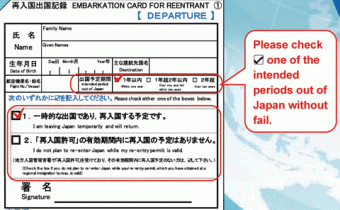
Take your residence card with you when leaving and re-entering Japan. Immigration officers will ask you to present your residence card at the port of departure/ re-entry.
When you leave Japan, be sure to present your residence card and tick the column indicating your intention of departure by the Special Re-entry Permit System on an ED card for Special Re-entry Permit. Be sure to tell your teacher and the school office when you leave Japan.
Return your Residence Card
After graduation or completion from Yoshida Institute, If you will leave Japan or return home, please make sure you return your residence card at the time of the departure no matter how much time your student visa has.
The immigration office will punch a hole in your residence card and give it back to you, If you want it as a memory.
Part-time Work
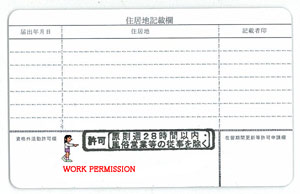
Permission to engage in an activity other than that permitted under the resident status may be given at some airports. : Application form(PDF-23.5kb)
zairyucard Wish the new residency management system, permission to engage in an activity other than that permitted under the resident status may be given at Narita and Haneda Airports (where residence cards are issued), to persons to whom all the following apply.
Those who are granted “Student” status and to whom a residence card (zairyuu-card) is issued.
With a student visa you are permitted to work up to 28 hours a week at a paid position, after obtaining permission from the Immigration department. Permission is usually granted once you have a command of basic Japanese. As the economy in lukewarm in Japan currently, finding a job will typically require a certain amount of effort on the part of the student. Many students work in restaurants and shops and this often requires a mastery of basic Japanese, so beginning students may not be able to find work until their command of daily Japanese has improved. However, students often find that jobs help their Japanese as they use it in everyday work situations and not just in the classroom. English speakers frequently find work teaching English. When you arrive at Yoshida, we’ll be happy to talk more with you about the procedures for getting approval to work and any job possibilities we’re aware of at the time.
Living cost in Tokyo
The cost of living for privately financed international students is about JPY 120,000 (US$1,100) per month on average in Tokyo. (Excluding school expenses)
Approximately 70% or more of privately financed international students in Japan are working part-time. They earn about JPY 80,000 (US$730) per month on average. And the hourly minimum wage for part-time employment in Tokyo is JPY 1,013.
By solely depending on part-time work, it is impossible to cover all school expenses and cost of living. Be sure to make an appropriate financial plan so that you do not have to depend too much on income from part-time work.
Getting Here
NARITA AIRPORT
- From Narita Airport, take the Airport Limousine Bus to Ikebukuro.We will meet you at Hotel etropolitan(Ikebukuro). Please ask us for pick up details if you are arriving in Ikebukuro.Limousine bus has bus services from Narita Airport to Ikebukuro 19 times per day.
- The manager of the dormitory will meet you at the airport. One of our representatives will greet you at Narita Airport to the dormitory by car or train. (Pick up for 6,000 yen per person).
- From Narita Airport, take the Skyliner to Nippori and change to the JR Yamanote line.
Trains stop in Otsuka (four stop) and change to the Toden Arakawa line. Please go down at terminal Waseda Station. There is our school in front of Waseda Station. - How to get to Yoshida from NARITA AIRPORT (map)
HANEDA AIRPORT
- From HANED Airport, take the Tokyo Monorail Line to HAMAMATSUCHO and change to the JR Yamanote line. Trains stop in Otsuka (one station before Ikebukuro) and change to the Toden Arakawa line. Please go down at terminal Waseda Station. There is our school in front of Waseda Station.
- The manager of the dormitory will meet you at the airport. One of our representatives will greet you at Narita Airport to the dormitory by car or train. (Pick up for 6,000 yen per person).
- How to get to Yoshida from HANEDA AIRPORT(map)
